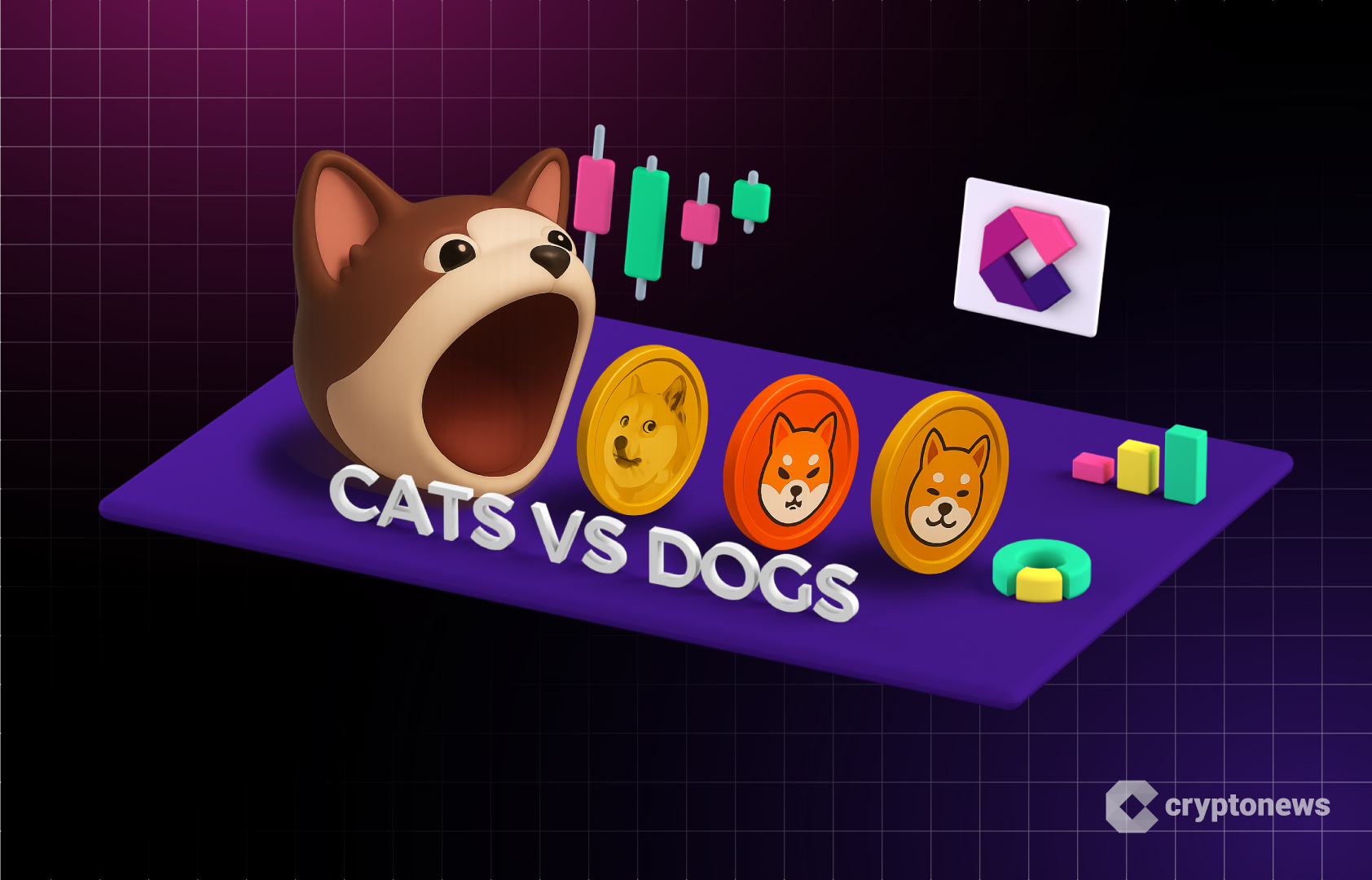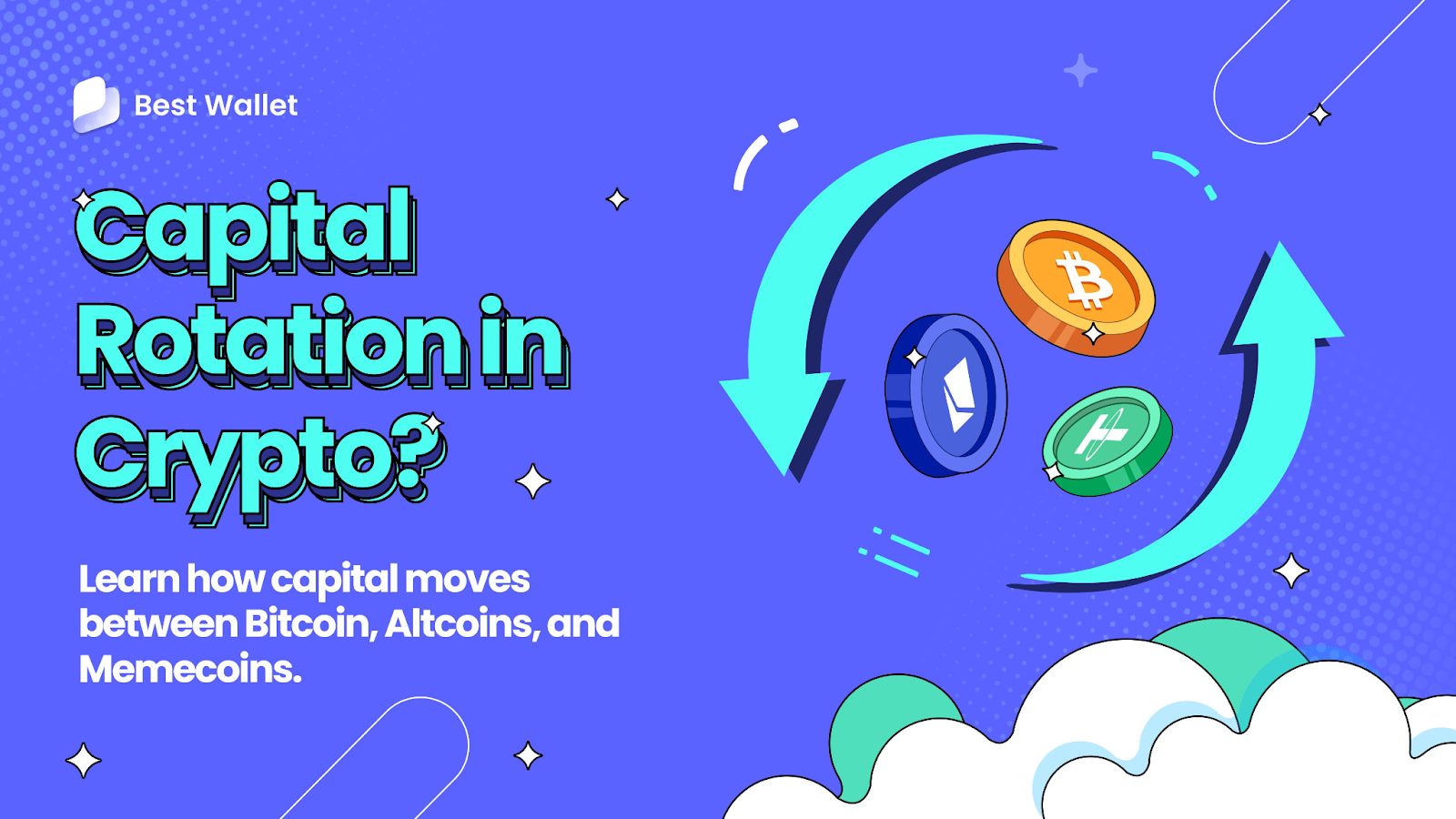Cats vs Dogs Meme Coins: Do Cats Take Over? | Research

Key Takeaways:
Cat and dog meme coins had nearly identical lifespans and survival rates. In Q1 2025, cat coins outperformed dog coins. In early May, both camps rebounded, but cats still led in total gains. Dog-themed coins showed stronger internal price correlation. Cat coins were less coordinated.The meme coin market has really branched out in recent years. Back when Dogecoin (DOGE) reigned supreme, anything with a barking mascot was front and center. But things have shifted. Now the dog pack has a rival: cat meme coins, led by Popcat (POPCAT).
The Cryptonews team dug into the numbers to find out who’s ahead in the cat-versus-dog rivalry. We analyzed the full universe of cat and dog meme coins, tracking their launch trends, lifespans, ROI, and overall performance, before zooming in on how they performed in Q1 2025.
Dog coins were among the earliest meme tokens. In addition to Dogecoin, there’s the well-known Shiba Inu (SHIB). But once Solana (SOL) took off, the game changed. A new wave of meme coins started showing up on its blockchain.
Bonk (BONK) surged during the Saga phone sale, then came dogwifhat (WIF) and friends, sparking serious FOMO.
Naturally, a response followed. Dogs stayed ahead in terms of the number of tokens launched every month. But in Q1 2024, cats started catching up. Their biggest moment came in November 2024, during the meme coin hype linked to the U.S. election season. Interestingly, every time dogs spiked, cats did so at a higher value than their rivals.
Cats Outperform Dogs in Early 2025 Returns
Return on investment (ROI) from Jan. 1 to May 10 shows that cat-themed coins delivered strong results, with several tokens standing out.
The market-cap weighted ROI for the group came in at 61.81%. But this average was dragged down by Popcat, the largest coin by market cap. When Popcat is excluded, the ROI rises to 89.34%.
The overall performance was influenced more by several high-cap coins than by the broader group of smaller tokens.
Dog-themed coins showed varied returns from Jan. 1 to May 10. The overall market-cap weighted ROI for dog-themed coins was -34.34%. Even when Dogecoin, the largest coin in the group, is excluded, the figure remains nearly unchanged at -32.73%. The results suggest that, unlike cat coins, the gains in this group were more evenly distributed across both large and smaller tokens.
Lifespans and Survival Rates: Battle Ends in a Draw
Most tokens in both camps didn’t survive. As of May 10, only 20% of cat-themed meme coins were still “alive,” while 80% were “dead”, meaning their price had dropped more than 90% from their all-time highs. Among dog-themed meme coins, 22% remained active, with 78% considered dead. The numbers show the high failure rate in the meme coin market, regardless of narrative or community size.
When it comes to staying power, dog meme coins appear to have the upper hand. On average, dog coins lasted 152 days before dropping more than 90% from their all-time highs, compared to 113 days for cat coins. However, this may be skewed by the fact that dog meme coins appeared earlier, which pulled the overall average higher.
When we focus only on tokens launched after November 2023, when both categories gained traction, the gap narrows. During this window, cat meme coins had an average lifespan of 98 days, while dog coins averaged 92 days.
Dogs Stick Together, Cats Less So
A price correlation check between top dog coins from January to May 2025 showed that most of them tend to move in the same direction. Dogecoin, the largest dog-themed meme coin by market capitalization and the original “top dog,” had a near-perfect match with Shiba Inu at 0.90. Bonk and Floki (FLOKI) followed closely with a correlation of 0.89. Dogecoin and Dog (Bitcoin) were less in sync, with a correlation of 0.61. Overall, dog coins often rise and fall together, though not always by the same margin.
Cat coins were more of a mixed bag. Popcat, the leading cat-themed coin by market capitalization, showed a strong correlation with Mog Coin at 0.84. There were moderate links between Popcat and Cat in a Dog’s World (MEW) at 0.55, and Meow (MEOW) at 0.49. Ket (KET) and Toshi (TOSHI) showed lower correlation with Popcat compared to other cat coins. In general, cat coins were less coordinated than the dogs.
Popcat vs Dogecoin Price: Volatility With Different Results
The monthly performance of the two category leaders, Popcat and Dogecoin, highlights how differently cat and dog coins behaved in early 2025. Popcat saw sharp declines through the first quarter.
Dogecoin price, in contrast, showed a different pattern. Although its price was also volatile, with a 37% drop in February and a 17.7% drop in March, it did not experience the kind of strong rebound seen in Popcat.
What Happened After Q1 2025
In early May, both categories picked up speed, and for the first time, their biggest names landed in the top five by ROI.
Cat coins led the way with a market-cap weighted ROI of 55.7% (or 59.6% when excluding Popcat).
Dog coins also saw a rebound. Their weighted ROI reached 39.9% (30.9% without Dogecoin). It’s also worth pointing out that several large-cap meme coins in the dog category finally started to move — a sign that some traders may be rotating back into the older names.
How We Did the Research
To compare cat- and dog-themed meme coins, we analyzed historical price and market cap data from CoinGecko for 508 dog coins and 388 cat coins, covering each coin’s entire life up to May 10, 2025.
We calculated market-cap-weighted ROI to measure each group’s overall performance. This means bigger coins had a greater impact on the result, giving a more realistic picture of the whole market’s performance.
To check if the coins moved together, we ran a correlation analysis on daily price changes for the top six coins by market cap. We used the Pearson method to see how closely their prices tracked each other.
The post Cats vs Dogs Meme Coins: Do Cats Take Over? | Research appeared first on Cryptonews.



